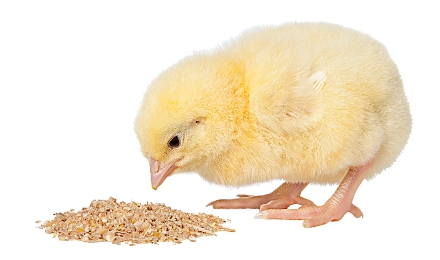
Enzymes
24 / Jul 19
Enzymes Feed Additive
Enzymes Supplement For Poultry and Livestock
Feed enzymes have become an important tool to increase the nutritional value of feed ingredients, reduce feed costs, improve the environment, all while maintaining or improving animal performance.
Enzymes that are used in animal nutrition (feed enzymes) are considered feed additives. Production and marketing of feed additives – and thus feed enzymes. Enzymes are now widely used in animal feed for various reasons, such as inhibiting antinutritional factors of ingredients, improving access to nutrients, compensating the lack of enzymes either for breaking down chemical bonds or the absence because of an undeveloped gastrointestinal tract in young animals.
Shelf Life: 24 Months
Other Names: Animal feed enzyme
Storage: Shades
Type: Enzyme Preparations
Physical Form: Powder
Delivery Time:5-7 Days
Packaging Details: Drum
Payment Terms: Paypal, Others, Telegraphic Transfer (T/T)
Sample Policy: Sample costs shipping and taxes has to be paid by the buyer
Main Export Market(s): Australia, Eastern Europe, Asia, South America, Central America, Africa, Middle East, Western Europe, North America
Main Domestic Market: All India
Sample Available: Yes
Enzymes Feed additives in feed production
1. Enzymes: Enzymes, are chemicals or catalysts released by cells to speed up specific chemical reactions. This definition accounts for enzymes released in the digestive tract to aid in the digestion of food. Today, these same enzymes can be effectively manufactured and added to animal feeds. Three classes of enzymes (phytases, carbohydrases, and proteases) are typically considered for use in poultry feeds.
2. Phytase products were first introduced in the early 1990s. Most producers are aware of and are typically using phytase in poultry diets. Legislation to decrease phosphorus pollution in some states has contributed to the increased usage of phytase. Phytase works by releasing some of the non-digestible phosphorus (and other nutrients) found in commonly used feed ingredients and making the nutrients available for productive purposes. Phytase is a proven technology used to reduce feed cost by reducing inorganic phosphorus supplementation and has the added benefit of decreasing phosphorus excretion in manure.
3. Carbohydrase enzymes have been proven to be effective in increasing the amount of energy available from feed ingredients. Key carbohydrase enzymes include amylase and xylanase and are used to improve the digestibility of carbohydrates in feed ingredients. This improved digestibility increases the availability of energy in the small intestine to help promote growth and other production processes. Corn provides a majority of the energy in a typical poultry diet. Amylase is a starch digesting enzyme that helps to digest more of the starch found in corn. Amylase increases starch digestibility, thus providing more available energy. Xylanase, on the other hand, releases energy from the fibrous portion of grains and grain byproducts.
4. Protease is a protein-digesting enzyme that breaks down storage proteins binding starch within feed ingredients. This makes the energy from protein-bound starch available to the bird to be used for productive purposes. Proteases are also effective in releasing protein anti-nutrients found in ingredients like soybean meal. This function of proteases makes proteins more available. A combination of amylase, xylanase and protease enzymes working together to each attack different poorly digestible portions of feed ingredients increases the energy available for growth and/or egg production. The addition of these three enzymes to the diet in combination typically increases the energy available to birds by 3 to 5%.
In Poultry Product
1. Increases egg production and hatchability in layers.
2. Egg quality is also maintained. More cleanly eggs with thick shells are maintained.
3. Improves flock uniformity leading to more consistent sized birds.
4. Improved slaughter results, high carcass weights and better grading.
5. Genetic Potential of birds can be explored enabling them to consume more quality feed to achieve maximum growth and production.
Benefits of Enzymes: Feed enzymes in poultry diets include; reduction in digestive viscosity, enhanced digestion and absorption of nutrients, especially fat and protein, improved Apparent Metabolizable Energy (AME) value of the diet, increased feed intake, weight gain, and feed–gain ratio, reduced beak impaction and vent plugging, decreased size of the gastrointestinal tract.
Swiss Chemie Market Specialty Chemicals For Veterinary Animal, Poultry Birds And Swine Health Industries.
We are a leading manufacturer and exporter of Swiss Chemie Special (Enzymes) and our product is made up of good quality.
For More Information And Price List Press Click
contact@swisschemie.co
